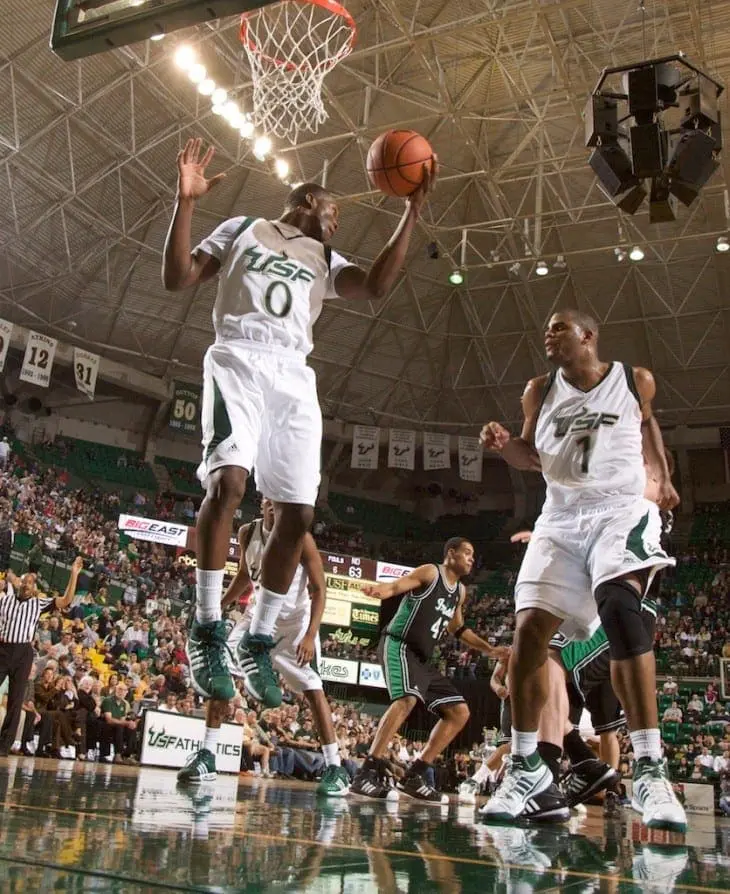On the Court with Chris Livingston

“I recently took the Panasonic L-1 digital SLR to the Notre Dame Men′s basketball game against the University of South Florida in Tampa, FL. Though it wasn′t my primary camera during the game it was one of the three remote cameras I used around the court to capture images I otherwise wouldn′t have been able to get.

The L-1 was mounted to a simple tabletop tripod and placed on the floor directly in front of my courtside seat. I positioned the camera in the vertical positioned and aimed it at the basket as basketball players are generally tall and jump up. The Leica zoom lens was set to 16mm (the equivalent of 32mm for 35mm D-SLR). I had an assistant stand in front of the basket so I could manually focus the lens.
One of the nice things about shooting basketball compared to other sports is you know exactly where the action will eventually be. One of the best tips I tell photographers who have never shot the sport is to zoom in on the rim, focus the lens (make sure to turn off the camera′s auto focus so that it won′t refocus later), zoom out and wait for the play to head to the basket.

Another tip to get good peak action in basketball is to wait until the player is about to shoot the ball to fire the shutter. Hopefully you can time it to where the ball is just leaving the shooter′s hand.
I would also recommend shooting when a player misses his shot and the group huddled around the rim jump up to get the rebound. Wait until the players are at the height of their jumps to fire the shutter. This is for two reasons. First is that this is considered peak action as the person is usually stretched out trying to grab the ball. The other is that you don′t have to use as fast of a shutter speed in order to freeze the action.

My images from the game were captured with the help of using powerful flashes mounted near the rafters of the arena. This allowed me to use lower ISO (Mine was set to 200 ISO) and a smaller aperture (I had the lens set at f/5.6) for more depth of field. Try to use the fastest shutter speed and widest aperture combination that your camera and lighting scenario will allow in order to freeze the action. I would try to shoot above 1/250th of a second to limit motion blur. Play around with the settings to find what works best for you.”



